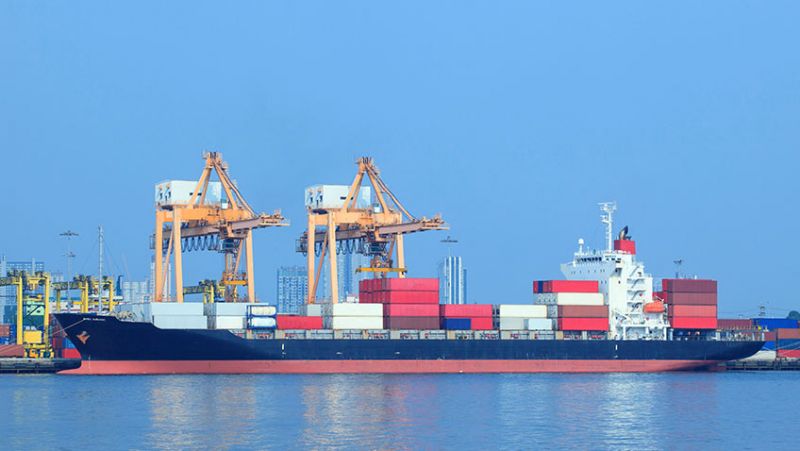
Are you looking to expand your horizons beyond the UK and bring in unique products or export your creations to international markets? Starting an import-export business can be a rewarding and profitable venture for entrepreneurs, designers, architects, tradesmen, and DIY home improvement enthusiasts. The opportunities are endless, whether it's sourcing beautiful materials from overseas or tapping into new markets for British innovations. In this guide, we’ll take you through the essential steps to launch your own import-export business, focusing on the construction, home décor, and interior design sectors.
Step 1: Identify Your Niche and Target Market
Beginners might be tempted to deal with a wide range of products, but success in import-export starts with specialization. Choose a niche that aligns with your experience, passion, or the needs of your local community. For instance, British tradesmen may decide to import high-quality timber from Scandinavia or export British-made ironmongery to growing overseas markets.
If you’re an interior designer or architect, consider sourcing unique tiles, lighting, or stone materials that aren’t readily available in the UK. Identifying these gaps in the market gives you a strong footing when you’re pitching your business to potential clients and partners.
To further refine your niche, perform market research focused on trends, customer preferences, and competitor activity. Online tools like Google Trends, trade forums, and interior design publications can help you spot what’s hot and what’s not.
Your ideal target market may include wholesale clients, retailers, construction firms, or even directly to consumers through an eCommerce platform. Determining this early allows you to tailor your branding, logistics, and pricing strategy effectively.
Step 2: Register Your Business and Get the Legal Basics Right
Your next step is legal and administrative. In the UK, you’ll need to decide whether to register as a sole trader, partnership or limited company. Most import-export businesses benefit from registering as a limited company due to credibility and tax advantages.
You'll also need to apply for an EORI (Economic Operator Registration and Identification) number through HM Revenue & Customs (HMRC). Without this, you cannot import or export goods to or from the UK legally.
In some cases, especially when dealing with controlled or specialised building materials, you might need licenses or certifications. Check with the Department for Business and Trade or the Import Control System (ICS) to avoid unexpected legal hurdles.
It’s also essential to understand VAT implications for cross-border trade. You’ll need to register for VAT if your turnover exceeds the threshold (£85,000 as of 2024), and understand how to handle VAT for imports and exports.
Step 3: Find Reliable Suppliers and Distributors
Success in the import-export world largely hinges on the reliability of your supply chain. Start your search by engaging with trade directories, attending international trade fairs, or using online platforms like Alibaba, GlobalSources, or Made-in-China—while exercising due diligence, of course.
Ask for product samples, verify certifications, and test response times. For architectural or interior materials, request technical specs, fire safety ratings, or sustainability credentials. A supplier that’s slow to reply or unwilling to provide quality documentation is a red flag.
If you plan to export, similarly identify overseas distributors who understand your product and the local architecture or design scene. Consider factors like customs knowledge, logistics ability, and customer relationships in their home market.
Building strong relationships takes time. It helps to start small, negotiate trial orders, and onboard partners gradually. Remember—communication is key, especially across time zones and language barriers.
Step 4: Understand International Shipping and Customs Procedures
For first-timers, arranging international transportation can seem like navigating a maze. Yet, a logical and well-executed shipping plan is vital, especially when transporting bulky goods like floorboards, fittings, or ceramics.
You need to decide between air freight, sea freight, or road freight depending on your budget and delivery timeframe. While sea freight is more economical for larger volumes, air freight works best for lightweight or time-sensitive items.
Work with a reputable freight forwarder or customs broker who can handle all documentation on your behalf. These professionals help you avoid costly mistakes and ensure that you’re not held up at customs due to a missing certificate or incorrect invoice format.
You'll also need to become familiar with Incoterms (short for International Commercial Terms) such as FOB (Free On Board) or CIF (Cost, Insurance and Freight). These terms define who pays for what and when risk transfer occurs during transit.
Here’s a quick reference table outlining some of the most common Incoterms:
| Incoterm | Meaning | Responsibility of the Seller | Responsibility of the Buyer |
|---|---|---|---|
| FOB (Free on Board) | Seller is responsible up to loading at port of shipment | Product cost, local transport to port, export customs | Sea freight, insurance, import customs & delivery |
| CIF (Cost, Insurance and Freight) | Seller pays until goods reach buyer’s port | Product cost, freight, and insurance | Import customs duties and delivery |
| EXW (Ex Works) | Buyer does everything from seller’s factory | Product availability only | All transport, insurance, duties and fees |
Step 5: Price Smartly and Manage Costing
Pricing in the import-export business is more complex than local retail. You'll need to account for shipping fees, customs duties, brokerage charges, storage, transit insurance, and currency fluctuations.
Work backwards from the marketplace price. If your tiles or joinery products would retail at £80 per square metre in the UK, calculate your total cost from the supplier and ensure you leave room for adequate profit margins.
Don’t forget about volume discounts. International suppliers often offer better rates when you purchase larger quantities. However, balance this with storage space and cash flow considerations if you're just starting out.
You may also need to adapt your pricing strategy based on your market. Designers and homeowners will pay more for exclusive finishes or handcrafted items, while commercial builders may cut budgets strictly.
Step 6: Promote, Sell, and Scale
Finally, your business success will depend on your ability to market and sell effectively. If you’re targeting UK-based tradesmen or designers, build a strong digital presence through a website featuring high-quality imagery, detailed product specs, and clear contact options.
Use content marketing and SEO strategies to win relevant search traffic – blogging about the benefits of Spanish marble or sustainable bamboo flooring can engage a niche audience. Search engines reward helpful localised content, especially for B2B customers finding suppliers within the UK.
Social media platforms like Instagram and Pinterest are particularly powerful for visual products like tiles, lights, and textured plaster. Showcase room designs, product installations, and behind-the-scenes sourcing videos to build trust and excitement.
Offline, consider collaborating with local showrooms, design expos, and trade magazines. Providing samples or sponsoring local renovation projects can get your products in front of the right hands without a large advertising budget.
Once sales are consistent, look into automating systems like inventory control, accounting and CRM tools. These help you focus on expanding markets, exploring new product lines, and diversifying suppliers.
Final Thoughts
Starting an import-export business requires careful planning, a solid network, and a bit of tenacity. But for hands-on professionals with a good eye for design and demand, it’s a chance to turn creativity and market knowledge into international success. Whether you’re an architect importing handmade Moroccan zellige tiles or a tradesman exporting your bespoke British cabinetry abroad, follow these six steps to build strong foundations for a thriving global business.
Now is the time to take those first bold steps—your clients are waiting for something new and extraordinary!


